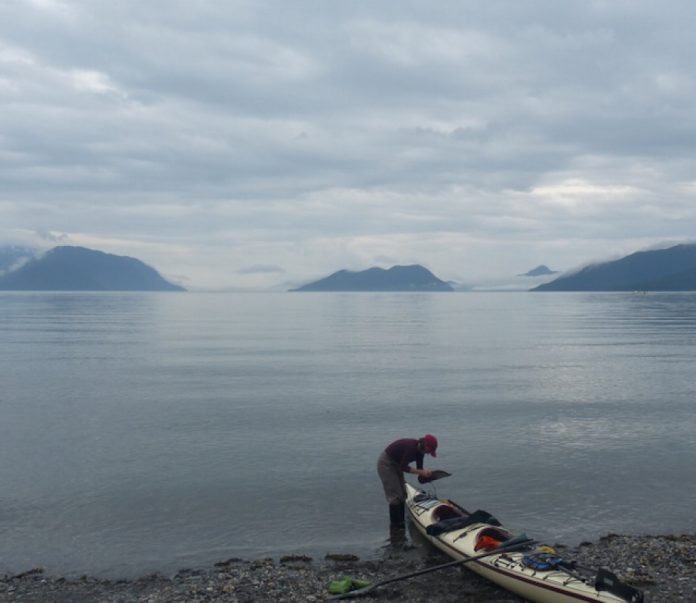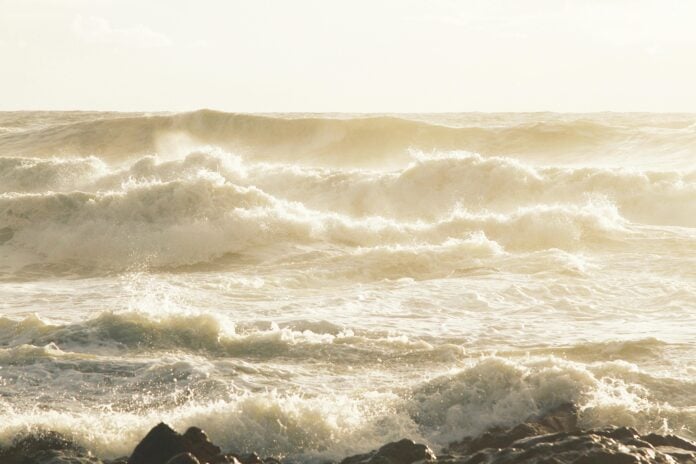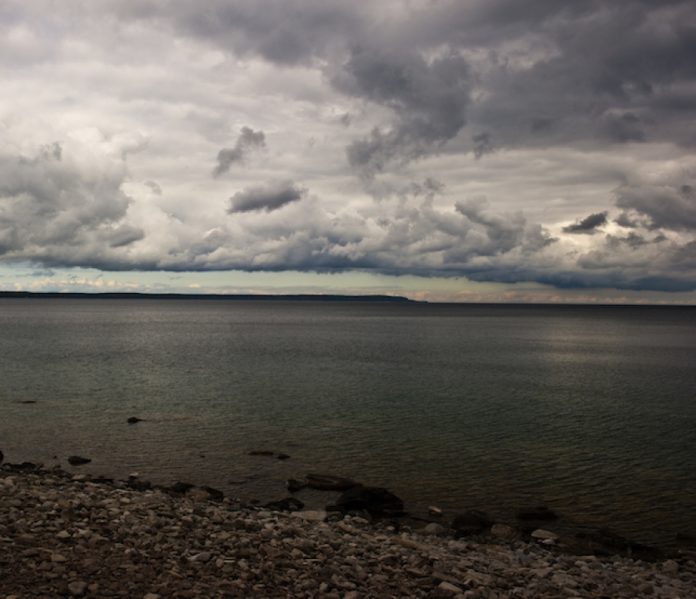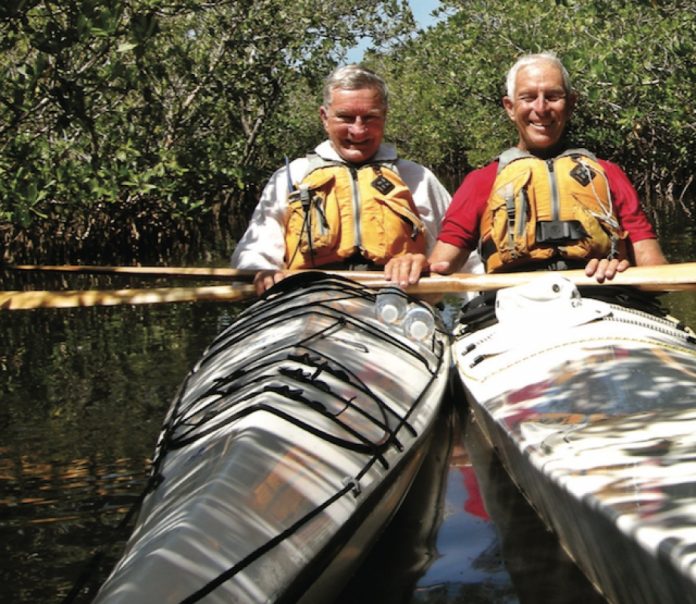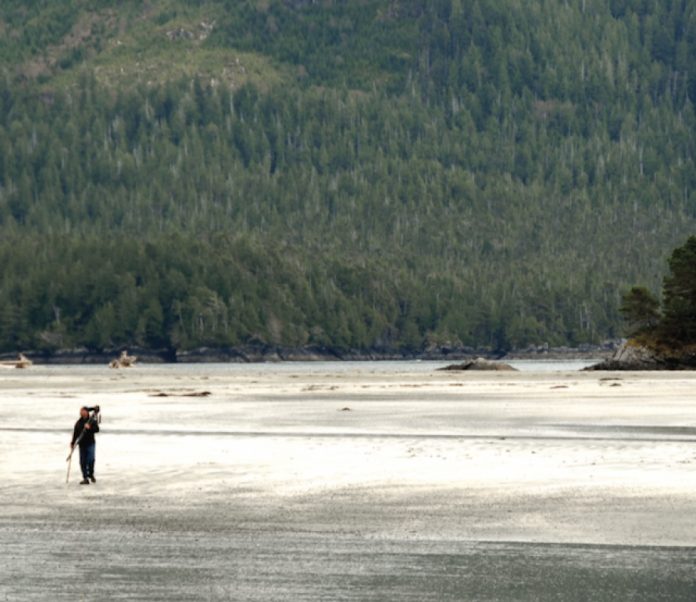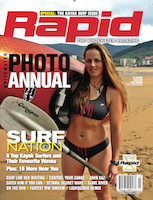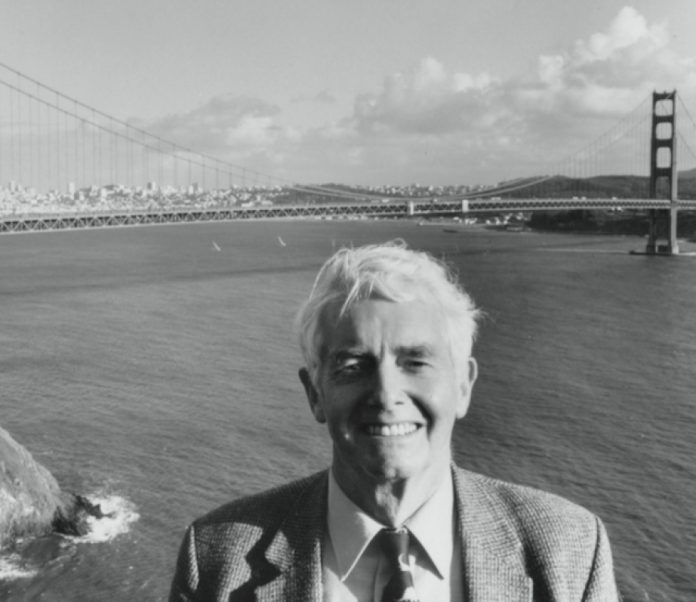We had no radio warning of the storm. It swept out of the arctic and down the eastern seaboard, the fiercest norther of the season, wrecking pleasure boats and capsizing a barge under tow off the Carolinas. In two doubles we were five hours into a 75-nautical-mile (139 km) crossing from Haiti to Great Inagua when a string of sausage-shaped clouds appeared along a glowering northern horizon. Astern, a line of mountains lay against a hazy sky.
We pulled the two kayaks close to discuss options. it would be dark in an hour, and the Haitian coast in a night storm was unthinkable. Meanwhile the cloud at the edge of the front raced towards us like a roll of fuzzy carpet. a waterspout materialized. As it veered a quarter-mile to the west, spirals of ocean twisted up the column into the low grey clouds. Uncertain puffs of wind teased us as we edged forward with a mixture of dread and excitement.
I snapped a cyalume light and attached it above the brim of my hat as a cloud of spray headed our way. We leashed our paddles. in the other kayak, Ken did the same. The first blast took our breath away and almost took the paddles as well. Darkness rushed in.
“Keep your stroke low!” I yelled, but I doubt my wife, Bea, heard me.
Spray flew so thick we could only open our eyes off the wind. It streamed off our coats and down our faces, filling our mouths with salty water. On the fringe of my vision i could just make out the hazy light on the other kayak, yet, whenever we drew closer we risked collision.
AN EMPTY HORIZON
During the next hour the wind blasted us through 360 degrees while we directed all our efforts to staying upright, gripping our paddles and not losing sight of the other kayak. Water sloshed about, inches deep in our boat. Only when the wind swung to the north and settled to a steady 20 knots were we able to open our spray skirts enough to pump.
For the remainder of the night, we slogged into the wind. At dawn, instead of our destination we saw an empty horizon. Ken thought he could see land to the southwest, Cuba, but as we watched, it morphed into cloud. With no better options, we held our course, grinding into the strong headwind.
By noon the troops were getting restless. I had sailed these waters 10 years previously and assured everyone that there was a huge lighthouse on Great Inagua, so keep an eye open for the tower.
By three 3 p.m. we were fading. Richard, in the front of the other kayak, was clearly in pain as he dragged his paddle low across the deck. Ken, who needed extraordinary amounts of water, was looking grey and drawn.
“I’m about done for,” said the SAS veteran.
“How about you?” I asked Richard. Richard was a recent replacement for an injured member and this was his first crossing in a kayak.
“Bit of the old chaffing I think,” he grimaced.
“And you?” I asked Bea.
“I’m okay,” she said, adding, “I could do with some sleep.”
“We’re almost there,” I said. “As soon as it gets dark you’ll see the loom of this light. It is visible for 30 miles.”
“I reckon that storm took us west and we’ve passed Great Inagua,” said Ken gloomily. I knew he could be right but we held our course.
Half an hour later, “I’m finished,” yelled Ken.
We paused and looked back. Ken slumped, head in hands, while Richard, his elbows locked at his sides scraped at the water by rotating his body. Beneath his coat, his T-shirt was soaked with blood.
Bea and I hooked up a towline, and then an extraordinary thing happened: a flood of new energy swept over us. The pain and exhaustion from the past 30 hours vanished and new life streamed through our bodies. The towline went taught and we churned the water.
THE FIRST HALLUCINATIONS
As night fell we searched the horizon for the loom of the great light. Nothing.
“I don’t understand it.” I admitted. “We should see it.”
Then the first hallucinations started. We needed sleep. We tied off our paddles, floating them alongside the kayak, then slumped down for some shut-eye, boats still linked by the towline.
I felt like I’d barely fallen asleep when I awoke to see the lights of a tugboat bearing down on us; a chance to fix our position. But no sooner had we drawn alongside than strong hands hauled both folding kayaks aboard, breaking their frames.
Mugs of hot coffee were thrust into our hands as news came through that we were just 11 miles from our destination and on course. The light on Great Inagua had died.
“Well you’re on your way to Tampa, Florida, now,” the skipper said. “Hell no!” said Bea. “Put us back and we’ll paddle in.”
For the rest of us, relief turned to dismay. She was right of course.
From the height of the tug’s deck, we could see the lights on Great Inagua. Once again the tugboat hove to and we were lowered, broken boats and all, over the side off the rearing, plunging after deck. Then, as she pulled away, we paddled, dazed, for shore 40 hours after leaving Haiti.
An ancient stone fort passed to port as we weaved a precarious route through old pier piles that protruded wickedly from the sea. Bea illuminated them with our searchlight while I manoeuvred the kayak. As we glided into a protected marina, a grounded Haitian refugee boat lined with blank-faced refugees greeted us. We dragged the boats up onto the beach and fell asleep on the sand.
I awoke, sweating in the heat of the mid-morning sun. There was no Haitian refugee boat, no old Spanish fort, and no wharf piles in the water, just a shared hallucination and two kayaks in need of repair.
John Dowd paddled from Venezuela to Florida in 1976–77 with his wife Beatrice, Ken Beard and Richard Gillet (who replaced Stephen Benson midway). This piece is abridged from an upcoming book about his kayaking and diving adventures.
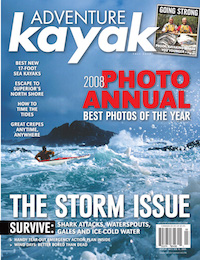 This article first appeared in the Fall 2008 issue of Adventure Kayak Magazine. For more great content, subscribe to Adventure Kayak’s print and digital editions here.
This article first appeared in the Fall 2008 issue of Adventure Kayak Magazine. For more great content, subscribe to Adventure Kayak’s print and digital editions here.
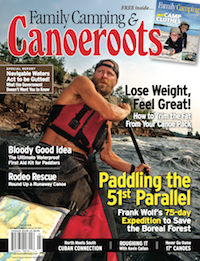



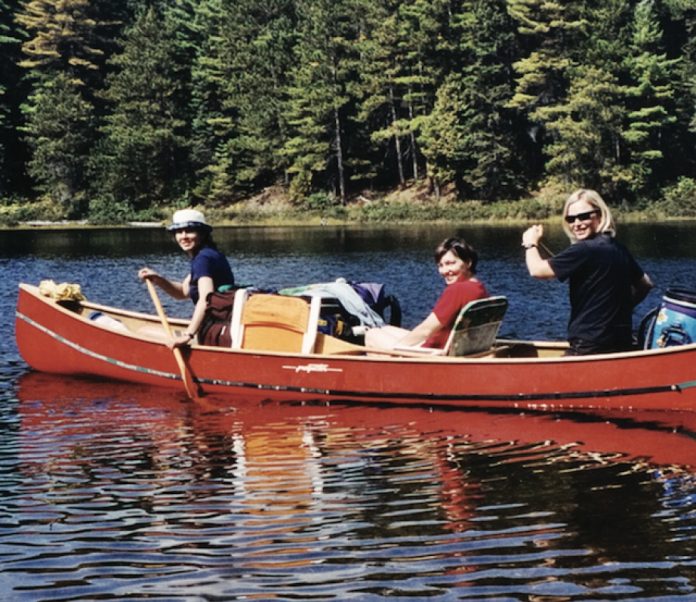
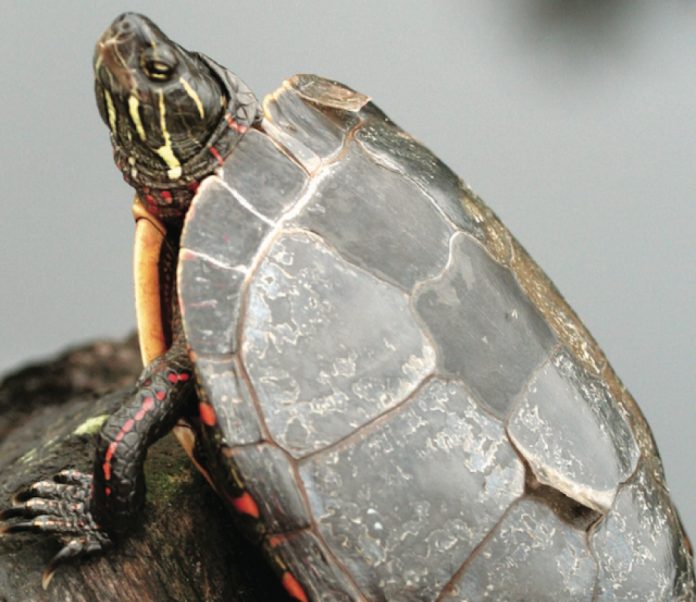
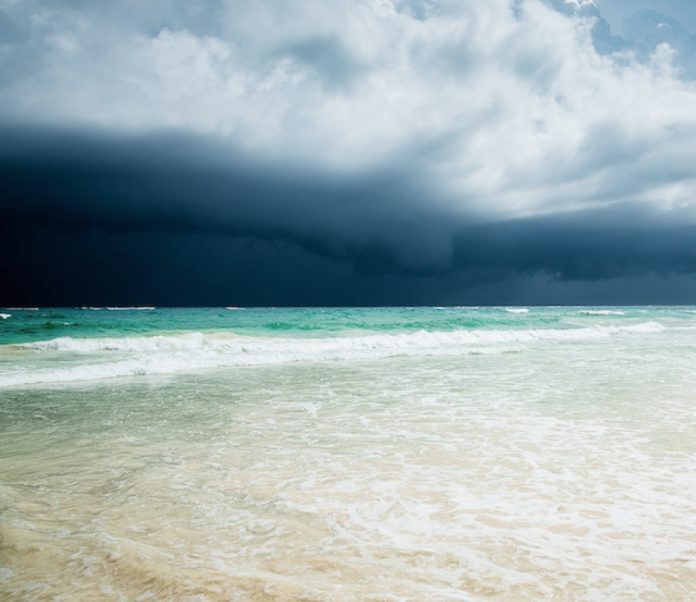
 This article first appeared in the Fall 2008 issue of Adventure Kayak Magazine. For more great content, subscribe to Adventure Kayak’s print and digital editions
This article first appeared in the Fall 2008 issue of Adventure Kayak Magazine. For more great content, subscribe to Adventure Kayak’s print and digital editions 